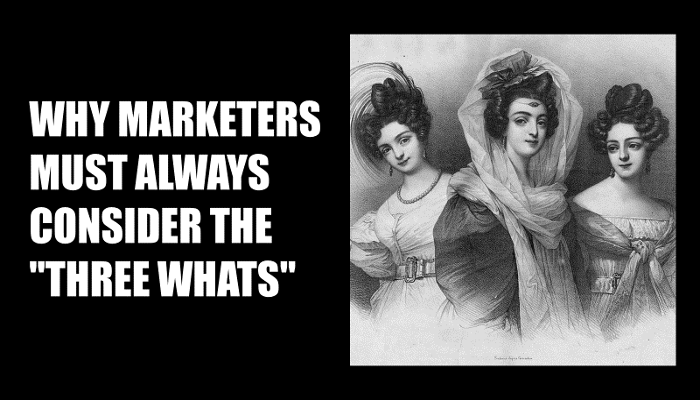
Have you ever been hooked by the opening of a story only to be disappointed at the end? Where the story opened with so much promise that you hung on every word, yet progressively lost interest as the story unfolded, only to end with a whimper instead of a bang? This unsatisfying experience is the result of a communicator who didn’t prepare the three whats of storytelling: What?; So, What?; and Wait! What?
1) “What?”
The first what refers to the story’s purpose. Without establishing a purpose, storytellers risk taking their audiences on aimless journeys. The problem is easily fixed by asking preparatory questions like:
- “What’s the reason for telling this story?”
- “What do I want to accomplish by the end of it?”
- “What do I want the audience to glean from the story?”
The answers can be as simple as “I want to make a point,” “I want to convince,” or “I want the audience to remember.”
2) “So, What?”
Sometimes the purpose is clear, yet it’s so transparently self-serving that the audience tunes out. Unfortunately, most marketing messages fall into this category. The best way to fix such blah, blah, blah, yada, yada, yada stories is to test your purpose with “So, what?“
Let’s give it a try:
“We are the worldwide leader in widget manufacturing.”
So what?
“We’re the world’s largest widget manufacturer.”
So what?
“Our factories have double the capacity of our nearest competitor.”
Better, but so what?
“Our large capability drives per-widget costs lower and so we can pass that savings to you.”
Bingo.
Hone your message through a recursive use of “So, what?” When you can’t come up with any new answers, you’ve probably hit a something that’s meaningful to your audience.
3) “Wait! What?”
Finally, with a message that has both purpose and relevance, consider spicing it up with a surprise fact. When used effectively, Wait! What? moments add depth and memorability to your story.
For example, did you know that a failed attempt at building a death ray lead to safer air travel and rapidly heated food?
During World War II, the allies wanted to create a death ray that could boil an enemy pilot in the cockpit. Although sound in theory, generating and transmitting the necessary energy proved impractical. However, that’s when the engineers considered a different approach. Rather than trying to blast the plane with a destructive amount of energy, what if they focused a low-power beam on the target and measured the energy reflected back?
As a result of their failed attempt at creating a a death ray, the allies stumbled onto two very different, yet successful applications: RADAR and the microwave oven.
Look at your story through the lens of the three whats. I promise that your audiences will love you for it.
Photo Credit: Wild, J. C. , Approximately , Lithographer, and Charles Fenderich. The three sweet-hearts / Fenderich d’apres Grevedon. , ca. 1844. [Philadelphia: Published by Fenderich & Wild Lithographers No. 215 Callowhill Street ; New York: Published by Tas. Cotrel No. 97 Fulton Street] Photograph. Retrieved from the Library of Congress, https://www.loc.gov/item/2004681704/.